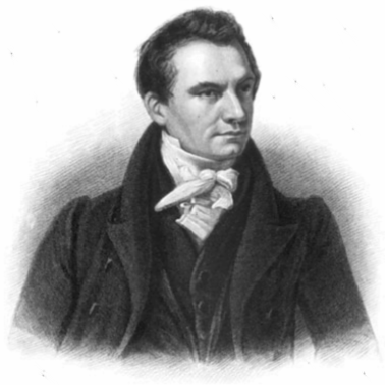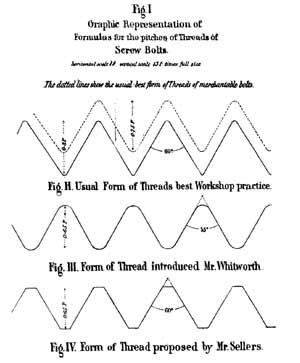|
Charles H. Lindsey
Charles Hodgson Lindsey was a British computer scientist, most known for his involvement with the programming language ALGOL 68. He was an editor of the ''Revised Report on Algol 68'', and co-wrote a ground breaking book on the language ''An Informal Introduction to Algol 68'', which was unusual because it was written so that it could be read ''horizontally'' (i.e., serially, in the normal manner) or ''vertically'' (i.e., starting with section 1.1, then 2.1, then 3.1, etc., before going back to section 1.2, then 2.2, and so on) depending on how a reader wanted to learn the language. He was responsible for the research implementation of ALGOL 68 for the experimental MU5 computer at Manchester University, and maintained an implementation of a subset named ALGOL 68S. He wrote the complete History of ALGOL 68 in: He was involved with developing international standards in programming and informatics, as a member of the International Federation for Information Processing (IFIP) ... [...More Info...] [...Related Items...] OR: [Wikipedia] [Google] [Baidu] |
United Kingdom
The United Kingdom of Great Britain and Northern Ireland, commonly known as the United Kingdom (UK) or Britain, is a country in Europe, off the north-western coast of the European mainland, continental mainland. It comprises England, Scotland, Wales and Northern Ireland. The United Kingdom includes the island of Great Britain, the north-eastern part of the island of Ireland, and many List of islands of the United Kingdom, smaller islands within the British Isles. Northern Ireland shares Republic of Ireland–United Kingdom border, a land border with the Republic of Ireland; otherwise, the United Kingdom is surrounded by the Atlantic Ocean, the North Sea, the English Channel, the Celtic Sea and the Irish Sea. The total area of the United Kingdom is , with an estimated 2020 population of more than 67 million people. The United Kingdom has evolved from a series of annexations, unions and separations of constituent countries over several hundred years. The Treaty of Union between ... [...More Info...] [...Related Items...] OR: [Wikipedia] [Google] [Baidu] |
Computer Science
Computer science is the study of computation, automation, and information. Computer science spans theoretical disciplines (such as algorithms, theory of computation, information theory, and automation) to practical disciplines (including the design and implementation of hardware and software). Computer science is generally considered an area of academic research and distinct from computer programming. Algorithms and data structures are central to computer science. The theory of computation concerns abstract models of computation and general classes of problems that can be solved using them. The fields of cryptography and computer security involve studying the means for secure communication and for preventing security vulnerabilities. Computer graphics and computational geometry address the generation of images. Programming language theory considers different ways to describe computational processes, and database theory concerns the management of repositories ... [...More Info...] [...Related Items...] OR: [Wikipedia] [Google] [Baidu] |
Computer Scientist
A computer scientist is a person who is trained in the academic study of computer science. Computer scientists typically work on the theoretical side of computation, as opposed to the hardware side on which computer engineers mainly focus (although there is overlap). Although computer scientists can also focus their work and research on specific areas (such as algorithm and data structure development and design, software engineering, information theory, database theory, computational complexity theory, numerical analysis, programming language theory, computer graphics, and computer vision), their foundation is the theoretical study of computing from which these other fields derive. A primary goal of computer scientists is to develop or validate models, often mathematical, to describe the properties of computational systems ( processors, programs, computers interacting with people, computers interacting with other computers, etc.) with an overall objective of discoverin ... [...More Info...] [...Related Items...] OR: [Wikipedia] [Google] [Baidu] |
Programming Language
A programming language is a system of notation for writing computer programs. Most programming languages are text-based formal languages, but they may also be graphical. They are a kind of computer language. The description of a programming language is usually split into the two components of syntax (form) and semantics (meaning), which are usually defined by a formal language. Some languages are defined by a specification document (for example, the C programming language is specified by an ISO Standard) while other languages (such as Perl) have a dominant implementation that is treated as a reference. Some languages have both, with the basic language defined by a standard and extensions taken from the dominant implementation being common. Programming language theory is the subfield of computer science that studies the design, implementation, analysis, characterization, and classification of programming languages. Definitions There are many considerations when defining ... [...More Info...] [...Related Items...] OR: [Wikipedia] [Google] [Baidu] |
ALGOL 68
ALGOL 68 (short for ''Algorithmic Language 1968'') is an imperative programming language that was conceived as a successor to the ALGOL 60 programming language, designed with the goal of a much wider scope of application and more rigorously defined syntax and semantics. The complexity of the language's definition, which runs to several hundred pages filled with non-standard terminology, made compiler implementation difficult and it was said it had "no implementations and no users". This was only partly true; ALGOL 68 did find use in several niche markets, notably in the United Kingdom where it was popular on International Computers Limited (ICL) machines, and in teaching roles. Outside these fields, use was relatively limited. Nevertheless, the contributions of ALGOL 68 to the field of computer science have been deep, wide-ranging and enduring, although many of these contributions were only publicly identified when they had reappeared in subsequently developed programming ... [...More Info...] [...Related Items...] OR: [Wikipedia] [Google] [Baidu] |
Victoria University Of Manchester
The Victoria University of Manchester, usually referred to as simply the University of Manchester, was a university in Manchester, England. It was founded in 1851 as Owens College. In 1880, the college joined the federal Victoria University. After the demerger of the Victoria University, it gained an independent university charter in 1904 as the Victoria University of Manchester. On 1 October 2004, the Victoria University of Manchester merged with the University of Manchester Institute of Science and Technology (UMIST) to form a new, larger entity named the University of Manchester. History 1851–1951 Owens College was founded in 1851, named after John Owens, a textile merchant, who left a bequest of £96,942 for the purpose. Its first accommodation was at Cobden House on Quay Street, Manchester, in a house which had been the residence of Richard Cobden. In 1859, Owens College was approved as a provincial examination centre for matriculation candidates of the University o ... [...More Info...] [...Related Items...] OR: [Wikipedia] [Google] [Baidu] |
ALGOL 68S
ALGOL 68S is a programming language designed as a subset of ALGOL 68, to allow compiling via a one-pass compiler. It was mostly for numerical analysis. Implementations A compiler for ALGOL 68S was available for the PDP-11, written in the language BLISS. The multiprocessor version designed for the C.mmp Description of C.mmp A68S implementation. has been preserved at the PDP Unix Preservation Society archive. Charles H. Lindsey created another implementation of ALGOL 68, named ALGOL 68S, for Sun-3, Sun SPARC (under SunOS 4.1), Sun SPARC (under Solaris 2), Atari ST (under GEMDOS) and Acorn Archimedes (under RISC OS), c.fCharles Lindsey's Home Page Chief differences from ALGOL 68 The main differences between ALGOL 68 and 68S, as summarised from Appendix 4 of the Informal Introduction, include: * No ''union'' * No ''flex'', but ''string''s are handled specially * No arrays inside structures (but references to arrays were allowed) and a similar restriction on arrays of arrays (m ... [...More Info...] [...Related Items...] OR: [Wikipedia] [Google] [Baidu] |
History Of Programming Languages
The history of programming languages spans from documentation of early mechanical computers to modern tools for software development. Early programming languages were highly specialized, relying on mathematical notation and similarly obscure syntax. Throughout the 20th century, research in compiler theory led to the creation of high-level programming languages, which use a more accessible syntax to communicate instructions. The first high-level programming language was Plankalkül, created by Konrad Zuse between 1942 and 1945. The first high-level language to have an associated compiler was created by Corrado Böhm in 1951, for his PhD thesis. The first commercially available language was FORTRAN (FORmula TRANslation), developed in 1956 (first manual appeared in 1956, but first developed in 1954) by a team led by John Backus at IBM. Early history During 1842–1849, Ada Lovelace translated the memoir of Italian mathematician Luigi Menabrea about Charles Babbage's new ... [...More Info...] [...Related Items...] OR: [Wikipedia] [Google] [Baidu] |
International Standard
international standard is a technical standard developed by one or more international standards organization, standards organizations. International standards are available for consideration and use worldwide. The most prominent such organization is the International Organization for Standardization (ISO). Other prominent international standards organizations including the International Telecommunication Union (ITU) and the International Electrotechnical Commission (IEC). Together, these three organizations have formed the World Standards Cooperation alliance. Purpose International standards may be used either by direct application or by a process of modifying an international standard to suit local conditions. Adopting international standards results in creating national standards that are equivalent, or substantially the same as international standards in technical content, but may have (i) editorial differences as to appearance, use of symbols and measurement units, substitution ... [...More Info...] [...Related Items...] OR: [Wikipedia] [Google] [Baidu] |
International Federation For Information Processing
The International Federation for Information Processing (IFIP) is a global organisation for researchers and professionals working in the field of computing to conduct research, develop standards and promote information sharing. Established in 1960 under the auspices of UNESCO, IFIP is recognised by the United Nations and links some 50 national and international societies and academies of science with a total membership of over half a million professionals. IFIP is based in Laxenburg, Austria and is an international, non-governmental organisation that operates on a non-profit basis. Overview IFIP activities are coordinated by 13 Technical Committees (TCs) which are organised into more than 100 Working Groups (WGs), bringing together over 3,500 ICT professionals and researchers from around the world to conduct research, develop standards and promote information sharing. Each TC covers a particular aspect of computing and related disciplines, as detailed below. IFIP actively promo ... [...More Info...] [...Related Items...] OR: [Wikipedia] [Google] [Baidu] |
Specification (technical Standard)
A specification often refers to a set of documented requirements to be satisfied by a material, design, product, or service. A specification is often a type of technical standard. There are different types of technical or engineering specifications (specs), and the term is used differently in different technical contexts. They often refer to particular documents, and/or particular information within them. The word ''specification'' is broadly defined as "to state explicitly or in detail" or "to be specific". A requirement specification is a documented requirement, or set of documented requirements, to be satisfied by a given material, design, product, service, etc. It is a common early part of engineering design and product development processes in many fields. A functional specification is a kind of requirement specification, and may show functional block diagrams. A design or product specification describes the features of the ''solutions'' for the Requirement Specificatio ... [...More Info...] [...Related Items...] OR: [Wikipedia] [Google] [Baidu] |



